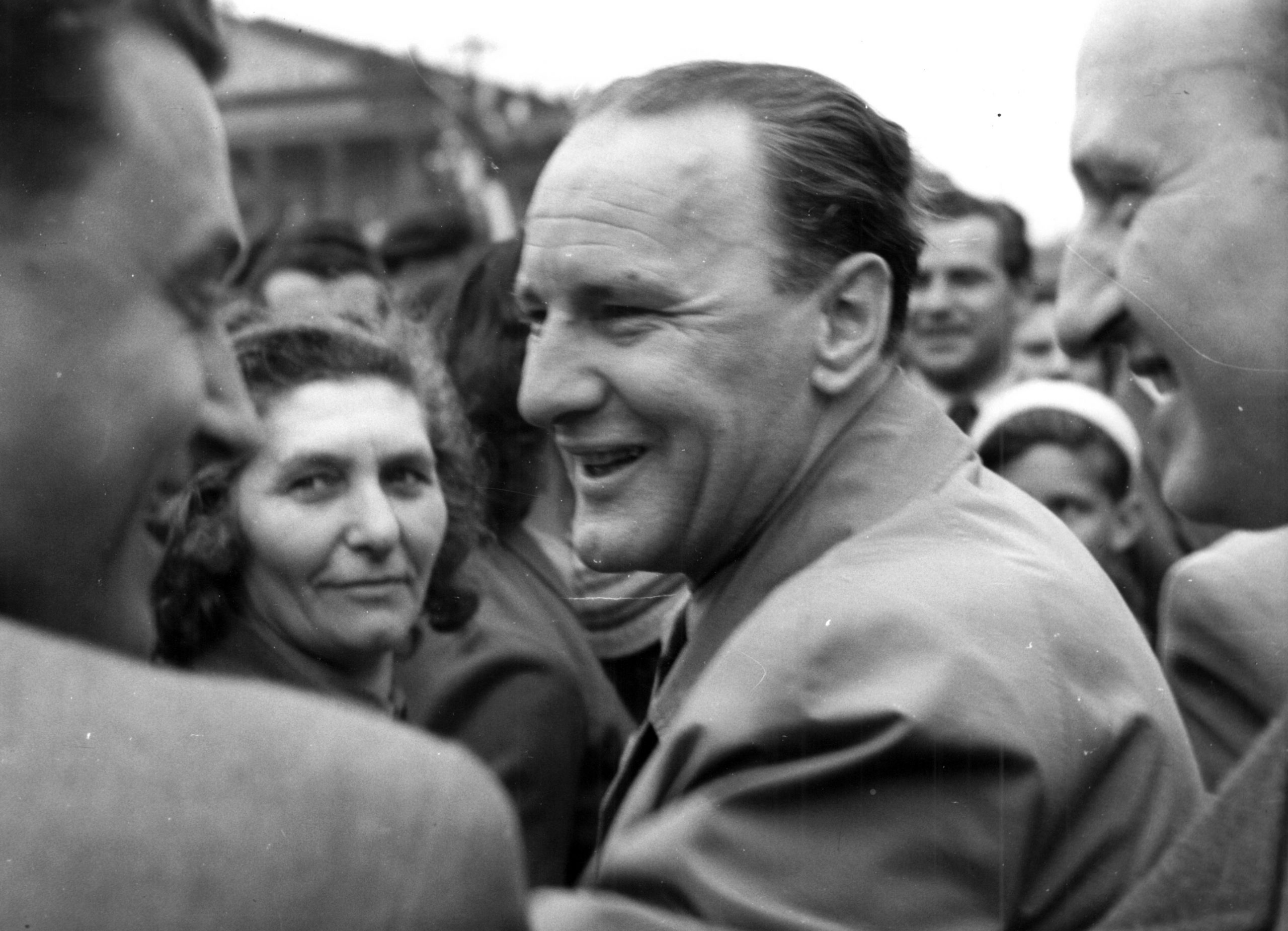Some who had been sympathizing with the communist systems from a distance, as a result of the events in Hungary, started to wonder whether this was really the way to go.Continue reading

65 years ago from today, János Kádár held his notorious May 1 Labor Day speech, celebrating the “freedom” provided by Soviet Hungary less than a year after the suppressed 1956 revolution. While they are remembered as heroes today, Hungarian freedom fighters who were forced to flee their homeland were labelled traitors and rebels by the General Secretary of the communist dictatorship in Hungary.
Hundreds of thousands of Hungarians gathered at Heroes Square on May 1, 1957, an astounding number considering that a few months prior the nation had united in its war against the Hungarian People’s republic, which had been in power since the end of the Second World War. However, the masses gathered at Kádár’s celebration start to make a bit more sense when considering the terror the army of the Soviet Union had inflicted upon Hungarians in crushing the revolution, followed by the mass imprisonments, internments, and executions that started after November 4.
Most people hated communism, both before and after the revolution. This is not only characterized by the revolution itself, but the tens of thousands of women who silently walked to Heroes’ Square to place flowers at the Tomb of the Unknown Soldier, and the Budapest residents who dispersed communists celebrating the Soviet victory a few days later.
Regardless of their emotional reasoning, the people were there, and the spectacle of the masses that gathered proved to be an advantageous propaganda tool for Kádár to show the support his administration enjoyed, even after the brutal events of the previous months.
In a lengthy speech made under the portraits of Marx, Engels, and Lenin, Kádár attempted to denigrate the revolution and its supporters, voicing the success of the Peoples’ Republic over the “counter-revolution.”

Hungarians gathering at Heroes’ Square on May 1, 1957, to listen to János Kádár’s speech. Featured photo via Fortepan, donated by János Keveházi
Despite its length, the speech is the textbook definition of what one would expect a recently appointed communist dictator’s speech to sound like after crushing a revolution. He starts by addressing the “enduring steadfastness” of the Hungarian working class over past authorities, describes the revolution in a way that attempts to posit the communist regime as the defender of the people, and ends with a plan to bring Soviet Hungary back to “proper working conditions.”
In his speech, Kádár describes Imre Nagy, the Prime Minister during the revolution, as a “traitor,” a notable statement considering that Kádár joined Nagy’s leadership of the revolution on October 25, 1956, only to turn against him soon after. Nagy, who released Kádár after he was imprisoned by Mátyás Rákosi, was tortured and executed under Kádár’s government in 1958.
Like the war of 1848, Russia was the key to staunching the Hungarian revolution in 1956. While the brutality of the Soviet Union on Hungarians is well documented, in his speech Kádár describes the nation as “Hungary’s most selfless, truest friend.”
Kádár said May 1, Labor Day, was made internationally relevant thanks to the victory of “societal progress and forces of peace” against the “big-capital imperialists seeking the subjugation of nations,” in 1956. This was characterized by the the snuffing out of “traitors.” “we clearly stated to everyone that we have a proletarian dictatorship, which is supported exclusively by the laboring masses,” he said, “while at the same time relentlessly suppressing the enemies of the working class.” This was met with loud applause.
A closer interpretation of Kádár’s speech indicates that it is filled with ambiguous language that on one hand appears to celebrate the power of the regime while also hinting at the terror it can inflict to dissenters.
“Regarding the results [of 1956] special mention should be made of the reorganized armed forces of our People’s Republic:” Kádár says in his speech, “the militia [people listening to Western radio stations risked imprisonment, and many were snitched on by their neighbors], border guards [more than 200,000 Hungarians fled Hungary, many people did not make it across the border], and police [22,000 Hungarians were imprisoned after the revolution, 16,000-18,000 were interned and hundreds were executed] “returning the legal order necessary for proper working conditions.”
Kádár consistently hints at the potential for punishment towards dissenters in his speech, not only in his characterizations of the West and the revolutionaries. He says that those responsible for the revolution were not punished enough, and calls on people to stay vigilant, since “wolves lurk under the garden.”
Today we know that the wolves who lurked under the garden were the ones who stifled a revolution for liberty and democracy in 1956, killing and imprisoning thousands, then had the audacity to celebrate such an act a few months later. Kádár’s speech is both a sign of the brutality the Soviet Union inflicted on Hungary and a reason for the history of 1956 to be remembered.
In the featured photo: János Kádár on May 1, 1957. Photo by Fortepan/Album059